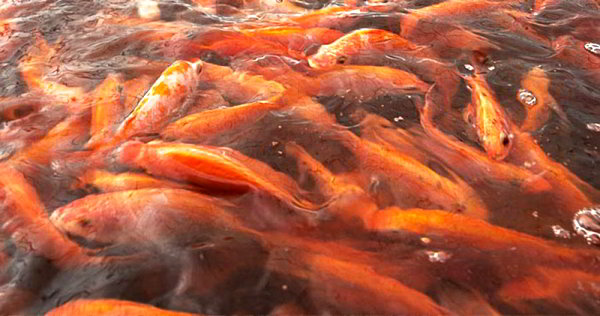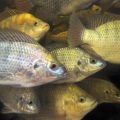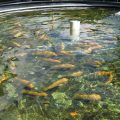The color red seems to catch even the fancy of fish consumers. The red sea bream, red snapper, and grouper all command good market but are highly priced.
Thus, the Philippine Council for Agriculture, Aquatic and Natural Resources Research and Development (PCAARRD)-coordinated National Tilapia Research and Development Program banks on the good prospects in offering red tilapia as a cheaper alternative fish to high-priced marine species.

With funding from the Department of Science and Technology (DOST), Dr. Tereso A. Abella , director of the Central Luzon State University-Freshwater Aquaculture Center (CLSU-FAC), is leading a program to improve the color and growth potential of the Red Nile Tilapia, a strain developed from a blond mutant of the Nile tilapia.
The red tilapia was first introduced in the Philippines from Singapore in 1978. To date, at least three variant strains of red tilapia are grown commercially in the country, namely: Taiwanese red, Florida red, and Israeli red.
The industry, however, is sluggish, hampered both by lack of readily available fingerlings and the slower growth of red tilapia compared to the grey or Nile tilapia. This slow growth is attributed to the presence of genes from the slow-growing Mossambique tilapia.
The Red Nile Tilapia at FAC, on the other hand, came from the crosses of Nile tilapia with blond phenotypes brought home from the Institute of Sterling in the United Kingdom.
While the breed carries the recessive red color gene, selective breeding through crossing with the faster growing Nile tilapia breeds and outcrossing with other red tilapia breeds offers possibilities for producing this fish with more appealing color and faster growth.
To get this program started, CLSU has sourced out red tilapia from government and private farms to broaden the genetic base of its founder stocks.
The program is also exploring the use of carotenoids to enhance pigmentation in the skin and flesh of the fish. This approach is known to have worked for trout, salmon, and ornamental fish.
So far, adding four natural sources of carotenoids, namely: annatto seeds, tomato, carrots, and yellow corn to a formulated tilapia diet shows promising results in improving the color of the Red Nile Tilapia. Trials are also on-going to determine its hatchery performance as well as its growth and survival in various culture systems.
The program “Genetic enhancement of the Red Nile Tilapia“ is a three-year program with a total grant of P19.98 million under the DOST Grants-in-Aid Program.
With this program, the CLSU-FAC research team is optimistic that the red tilapia will take on a bigger share of tilapia production by 2016.






